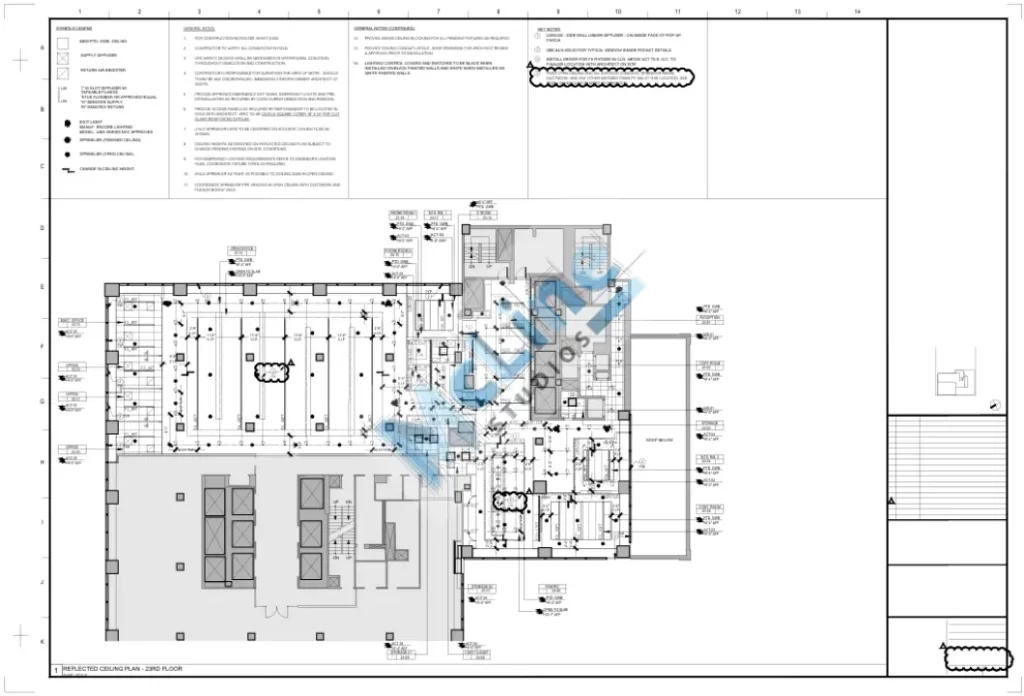When you’re constructing any building or project, technical drawings like shop drawings and fabrication drawings become essential fundamentals for translating design concepts into reality. Generally, many technical drawings might appear similar but they serve different purposes and come into action at different stages of the construction.
Today we’ll uncover the differences between two of these technical drawings – Shop drawings and Fabrication drawings.
Shop drawings provide detailed, specific information required to fabricate components of a project. On the other hand, Fabrication drawings are a specific type of shop drawings but with a focus on the assembly process.
That means you can consider all fabrication drawings as shop drawings but not all shop drawings as fabrication drawings. The understanding of the difference between these technical drawings is vital for professionals in the construction and manufacturing industries, as it provides the accuracy and efficiency of the project from design to completion.
Let’s discuss the differences in detail.
What Are Shop Drawings?
Shop drawings include dimensions, materials, and the exact specifications for manufacturing individual parts.
These drawings are typically created by contractors, subcontractors, or manufacturers, and they ensure that every piece meets the design and engineering requirements.

Purpose Of Shop Drawings
The main purpose of shop drawings is to translate the architect’s and engineer’s design intent into precise, actionable information for fabrication and installation. They bridge the gap between the general design documents and the actual construction or manufacturing process.
Uses Of Shop Drawings
- Fabrication: Shop drawings provide exact specifications for manufacturing custom components.
- Installation: These drawings guide on-site workers in properly installing prefabricated elements.
- Coordination: These help in identifying potential conflicts between different building systems before construction begins.
- Quality control: These drawings allow architects and engineers to review and approve specific details before fabrication.
- Regulatory compliance: These demonstrate compliance with building codes and standards.
- As-built documentation: These drawings can be used to create accurate records of the final construction for future reference.
- Cost estimation: These drawings provide detailed information for more accurate pricing of custom elements.
What Are Fabrication Drawings?
Fabrication drawings are detailed sets of drawings used in the manufacturing and construction industries to guide the production or assembly of components.
These drawings include precise specifications, dimensions, materials, and assembly instructions required to fabricate parts or structures accurately.
Purpose Of Fabrication Drawings
The purpose of fabrication drawings is to provide detailed and precise instructions for manufacturing and assembling components.
These drawings ensure that parts are fabricated accurately, with correct dimensions, materials, and tolerances, to fit together as intended. They guide the production process, specify assembly methods, and include quality control measures to maintain standards.
Uses Of Fabrication Drawings
- Guidance for Fabrication: These drawings serve as detailed blueprints that guide fabricators and manufacturers on how to create specific parts and assemblies.
- Material Specification: These drawings often include lists of required materials, specifying the type, grade, and dimensions of the materials needed. This also helps in estimating costs and managing budgets more effectively.
- Quality Control: These drawings serve as a reference for quality control inspectors to verify that the fabricated parts meet the required specifications.
- Assembly Instructions: For complex assemblies, these drawings provide step-by-step instructions on how to assemble the components. They help in determining the correct sequence of assembly operations.
- Maintenance and Repairs: These are used as references for maintenance and repair work, making sure that any replacements or repairs are done correctly.
Shop Drawings vs. Fabrication Drawings
| Aspects | Shop Drawings | Fabrication Drawings |
| Purpose | Provide detailed instructions for the installation process. | Provide detailed instructions for the manufacturing and assembly process. |
| Content | Includes dimensions, materials, and installation details. | Includes dimensions, materials, manufacturing details, and sequence of assembly. |
| Audience | Primarily used by construction and installation teams. | Primarily used by manufacturing, production, and assembly teams. |
| Level Of Detail | Focuses on overall installation requirements and specifications. | Focuses on precise manufacturing details and specifications. |
| Created By | Created by contractors, subcontractors, or suppliers. | Created by manufacturers or fabricators. |
| Review and Approval | Often reviewed and approved by architects, engineers, or project managers. | Reviewed and approved by manufacturing engineers, quality control teams, or assembly teams. |
| Compliance | Must comply with design and engineering specifications. | Must comply with manufacturing standards and tolerances. |
What Should You Choose – Shop Drawings Or Fabrication Drawings?
Choosing between shop drawings and fabrication drawings depends largely on the stage of the project and its specific requirements.
Shop drawings serve as a guide for contractors during construction, making sure that the design intent is accurately translated into reality. These drawings are crucial in complex projects requiring precise measurements and assembly instructions.
On the other hand, fabrication drawings focus on manufacturing and assembly. They provide detailed instructions for fabricators, including welding details, material specifications, and finishing requirements. Fabrication drawings are essential for ensuring that components are produced according to design specifications and meet quality standards.
In summary, the choice between shop drawings and fabrication drawings depends on whether you need detailed instructions for construction (shop drawings) or manufacturing (fabrication drawings).
Both are critical for ensuring the successful execution of a project, with each serving specific purposes in the construction and manufacturing processes.